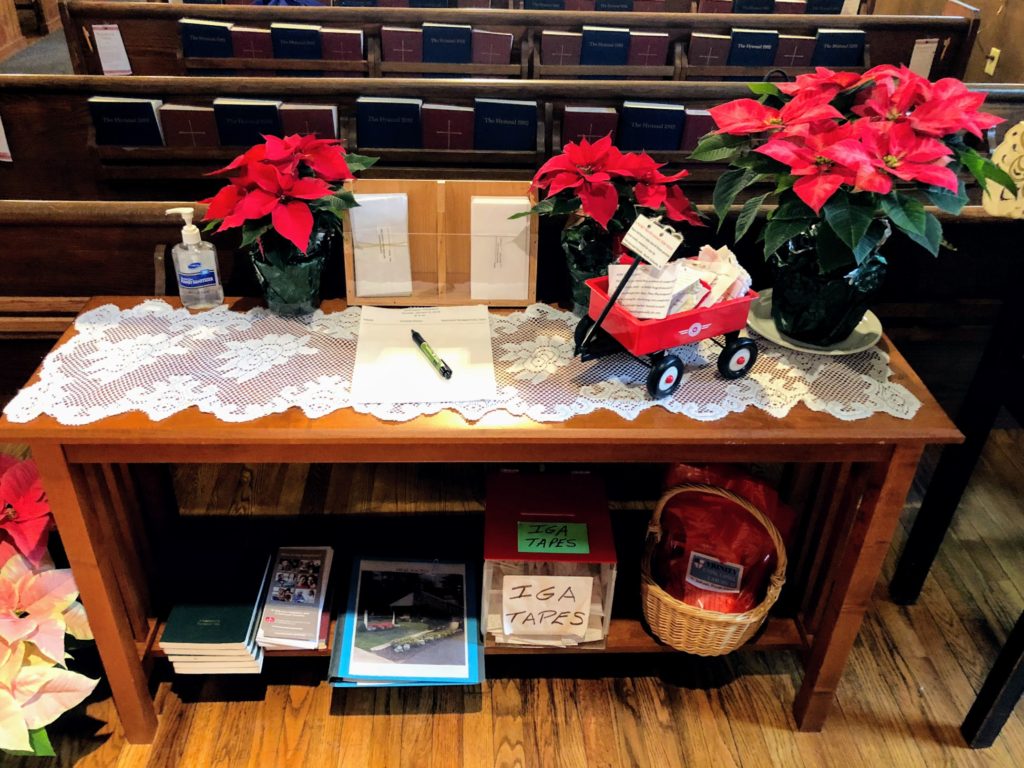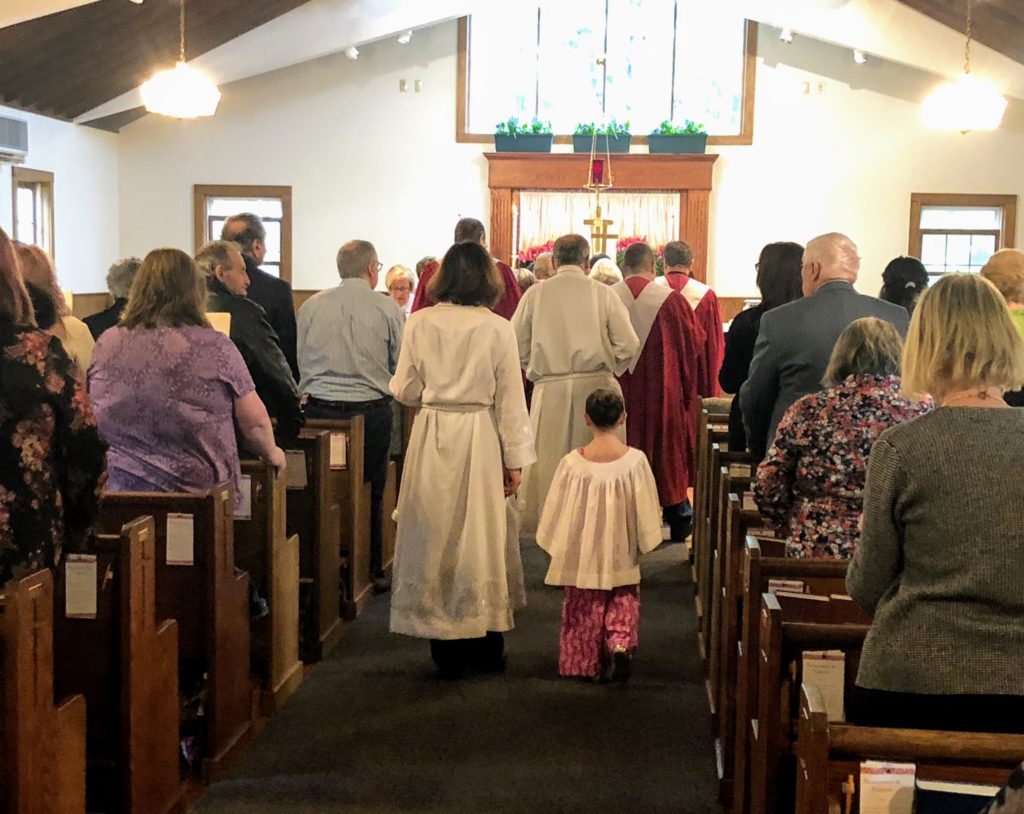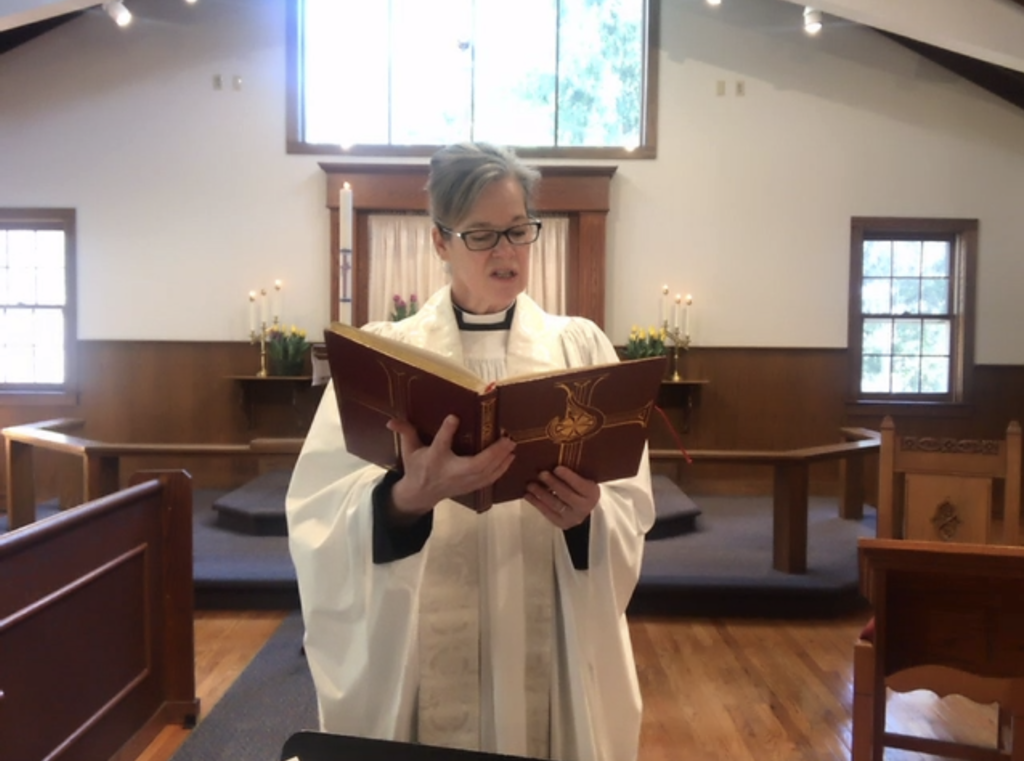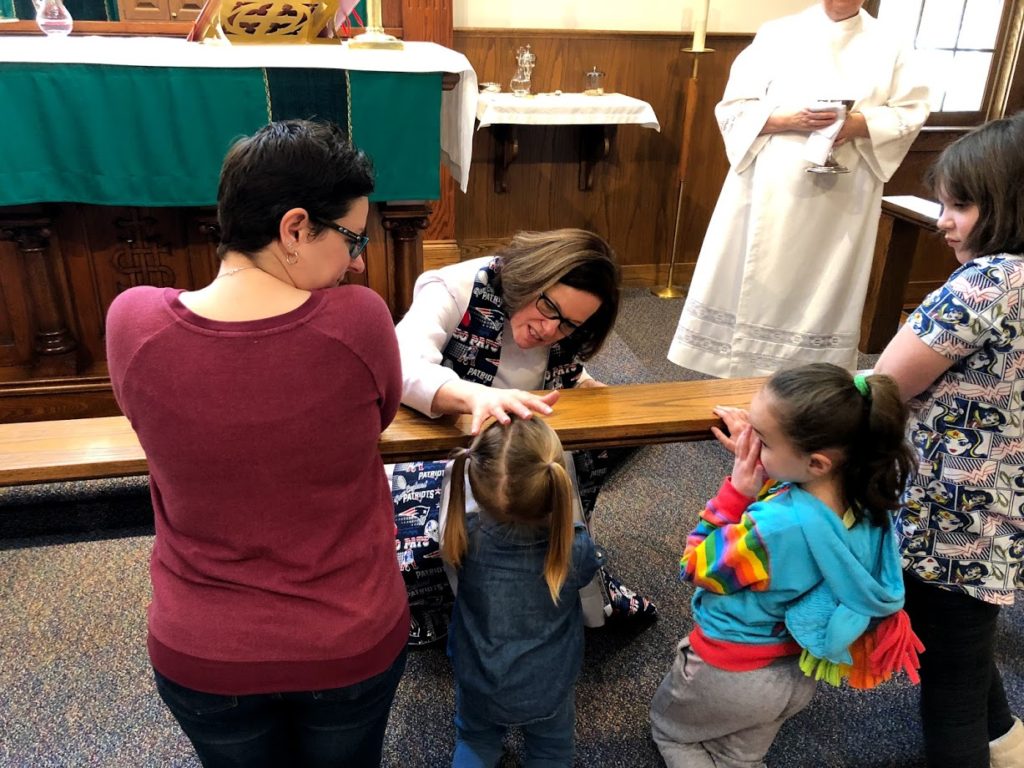What to Expect as a Visitor
Welcome!
When visiting our church, be sure to fill out one of our visitor cards (hanging in the pews) and place it in the offertory plate as it comes by you. Also, we encourage you to introduce yourself as a visitor to one of our greeters or any parish member.
For children, coloring pages, crayons, and books are available to use during services, also located in the back of the church. There is a nursing mother’s room available in the undercroft (lower-level) of the church. Please ask our greeters if you need assistance finding it.

Our restroom is also located in the undercroft. Stairs leading to the undercroft are located in both the front and the back of the church. A wheelchair-accessible restroom is available in the sacristy at the front of the church, through the door to the right of the organ.
For those needing mobility assistance, a ramp is available to the left of the church with access through a side door. There are a few spaces reserved for wheelchairs and scooters. If you would like to have communion brought to you in your pew during the service, please inform one of our greeters as they are inviting each row to proceed to communion.
Should you have any questions, our greeters are always available to help.
Services at Trinity
While the services are different in length, size, and tenor, each offers:
- A welcoming spirit
- Holy Communion or Eucharist (to which everyone is invited)
- A devotion to Episcopal liturgy – biblical readings, a sermon, time for prayer, etc.
Dress at all services ranges from formal to informal, but trends toward the casual.
During the majority of the year, a contemplative service of Holy Eucharist is held on Saturday evenings at 5:00 pm and Sunday mornings at 8:00 am. Both services are intimate in nature and last about forty-five minutes.
Holy Eucharist with music is celebrated on Sunday mornings at 9:30 am. Our 9:30 am service is an uplifting mix of the formal and informal. Our music minister and parish choir provide musical accompaniment for the entire service. Our children and youth are offered many opportunities to participate in the celebration of Holy Eucharist. This service usually lasts about an hour.
During the summer months, we usually offer a reduced service schedule and our choir takes a summer break. Be sure to verify our service times at the very bottom of this website or call the parish office before attending.
Episcopal Worship

Our worship is liturgical, meaning that the basis for our worship comes from a prayer book. Our Book of Common Prayer is based on the worship of the earliest Christian communities, Scripture, and the pastoral needs of the people.
We are Eucharistically centered in our worship. This means that the Holy Eucharist (Holy Communion) is the norm every Sunday. Our worship is a balance between Word and Sacrament.

We follow the three-year Sunday lectionary, meaning that Scripture lessons are appointed for each Sunday on a three-year cycle. This assures us that the vast majority of the entire Bible is read, heard, and preached upon within this three-year cycle.
Preaching is important to Episcopalians, and preaching that connects Scripture to current events and ordinary daily life is our standard. Every Sunday there are three lessons: a lesson from the Hebrew Scriptures and a Psalm; and Epistle (one of the letters from Paul or another of the apostles to the early churches); and a lesson from one of the four Gospels (Matthew, Mark, Luke, John). More often than not, Episcopal preachers focus on the Gospel lesson of the day.
The Service Bulletin
Episcopal worship can be confusing if your worship background has not been in a liturgical tradition. Our bulletin is designed to assist you in finding your place in the Book of Common Prayer. The scripture readings are printed out on in an insert found in the bulletin so that you may follow along as they are read, and so that you may take them home with you for personal study and prayer throughout the following week!
All who are able are invited to stand for prayer as a symbol of our rising to new life with our Resurrected Lord. We kneel for the General Confession of Sin, and the Absolution that follows. At the rail to receive Communion, some stand and others kneel. The important thing is that you do what feels most comfortable to you.
Communion
To receive communion, place one hand on top of the other, palms up. The priest will place a wafer of bread in your hand saying, “The Body of Christ; the bread of heaven.” After that, there are several options in regard to the cup:
- If you will be receiving the wine from the common cup (or chalice), simply take your hands to your mouth and eat the bread. Then the Chalice Bearer will bring the cup to you, so that you may take a sip.
- If you choose, you may intinct, which means that you do not immediately eat the bread; this signals the Chalice Bearer who will take the bread from your hands, dip it into the wine, and then place it in your mouth.
- If you choose not to receive the cup at all, simply cross your arms over your chest and the Chalice Bearer will go to the next person.
Please remain standing or kneeling at the altar rail until the person to your left has received both the bread and wine. This is common etiquette, but also symbolizes our unity as a Christian community, so that no one receives Communion alone.

